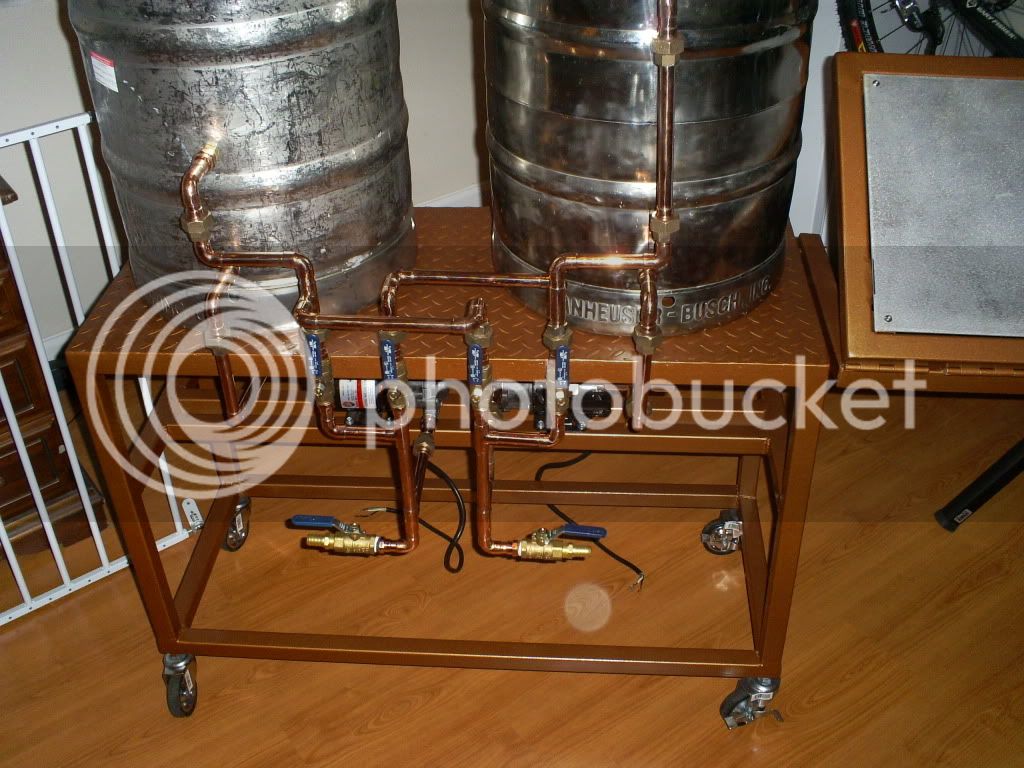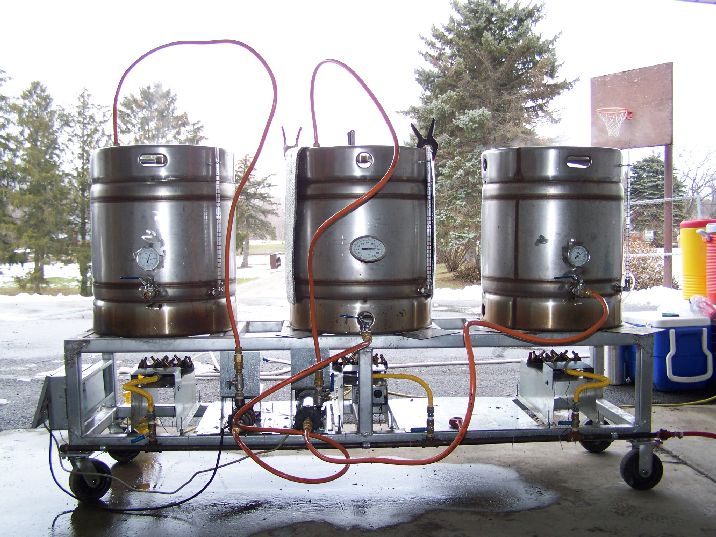I've been very slowly gearing up for a new and much improved brew rig. Initially, I was going to plumb it with a mix of copper and stainless tubing and pipe, mostly for function, and perhaps for a little bling factor. Lately, I've been considering a semi-permanent installation of flexible silicone tubing, instead (Austin Homebrew carries some great high temp translucent tubing). The pros and cons:
Metal plumbing pros:
Permanent - will not significantly deteriorate over time
Will withstand any reasonable brewing temperature/pressure
Never kinks or collapses
Looks cool
Metal plumbing cons:
Permanent - hard to change if/when the need arises
Not transparent
Copper requires a bit of upkeep to keep it from oxidizing
Installation is time consuming and not forgiving of minor errors
Silicone tubing pros:
Easy to install
Easy to make changes
Translucent - can observe flow or lack thereof
Never oxidizes
Silicone tubing cons:
Can kink
Can collapse under significant pump draw (usually not a problem)
May deteriorate faster than metal
Not shiny and neat-o
I can mitigate the kinking and collapsing by routing the lines in a similar fashion to metal and providing some support where required. I have some silicone tubing that has endured several years of routine use, and it shows no sign of wear.
I like the flexibility that silicone tubing provides. I'm constantly tinkering with new ideas, and rigid lines would prevent simple changes to the routing/valving. I also like being able to see what's happening inside the lines. I've fixed pump priming issues and aeration by tracing the bubbles in the lines.
What do you use? What would you use if you were re-designing your system? What else would you consider? What am I missing?
Metal plumbing pros:
Permanent - will not significantly deteriorate over time
Will withstand any reasonable brewing temperature/pressure
Never kinks or collapses
Looks cool
Metal plumbing cons:
Permanent - hard to change if/when the need arises
Not transparent
Copper requires a bit of upkeep to keep it from oxidizing
Installation is time consuming and not forgiving of minor errors
Silicone tubing pros:
Easy to install
Easy to make changes
Translucent - can observe flow or lack thereof
Never oxidizes
Silicone tubing cons:
Can kink
Can collapse under significant pump draw (usually not a problem)
May deteriorate faster than metal
Not shiny and neat-o
I can mitigate the kinking and collapsing by routing the lines in a similar fashion to metal and providing some support where required. I have some silicone tubing that has endured several years of routine use, and it shows no sign of wear.
I like the flexibility that silicone tubing provides. I'm constantly tinkering with new ideas, and rigid lines would prevent simple changes to the routing/valving. I also like being able to see what's happening inside the lines. I've fixed pump priming issues and aeration by tracing the bubbles in the lines.
What do you use? What would you use if you were re-designing your system? What else would you consider? What am I missing?








